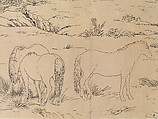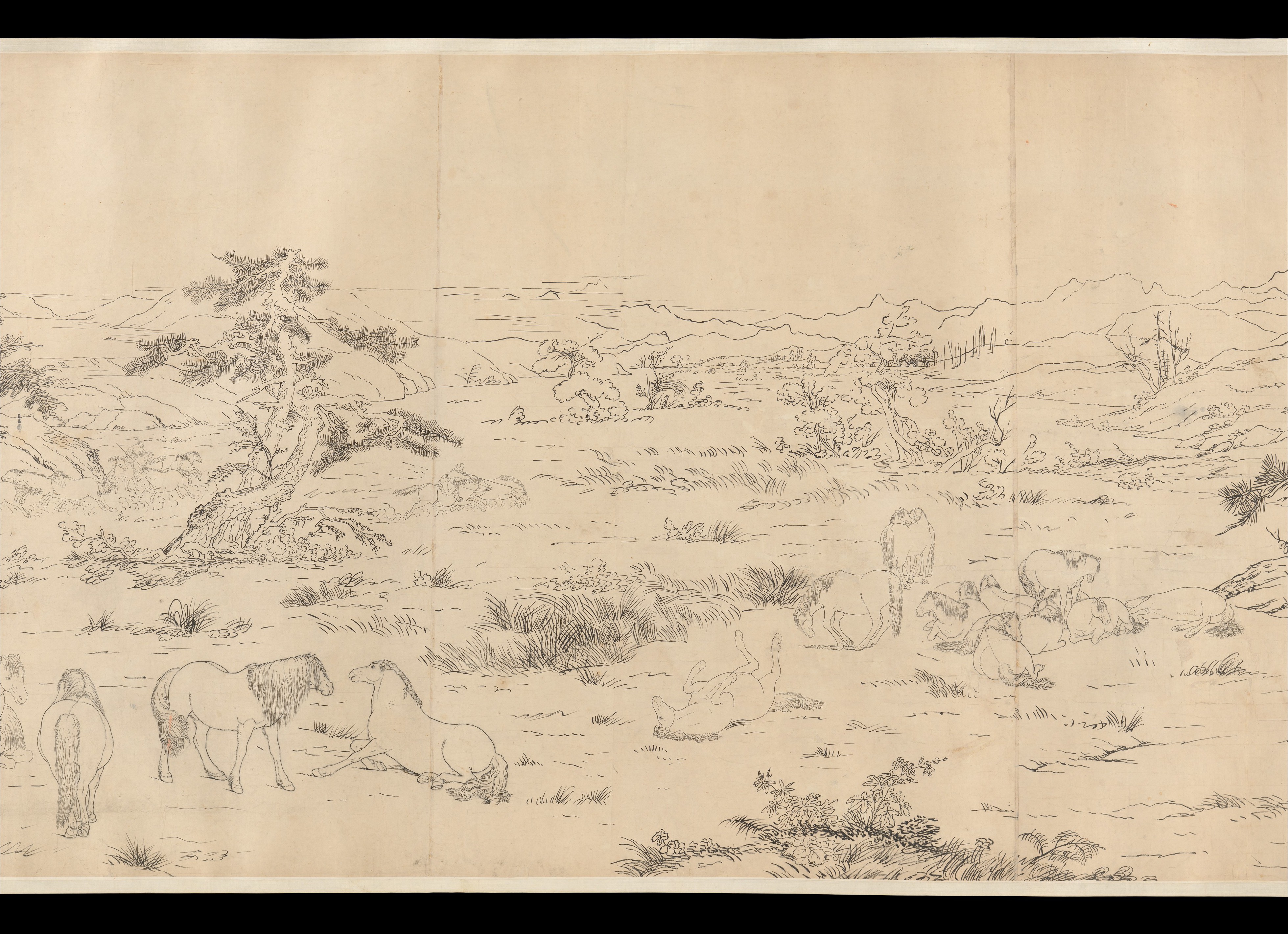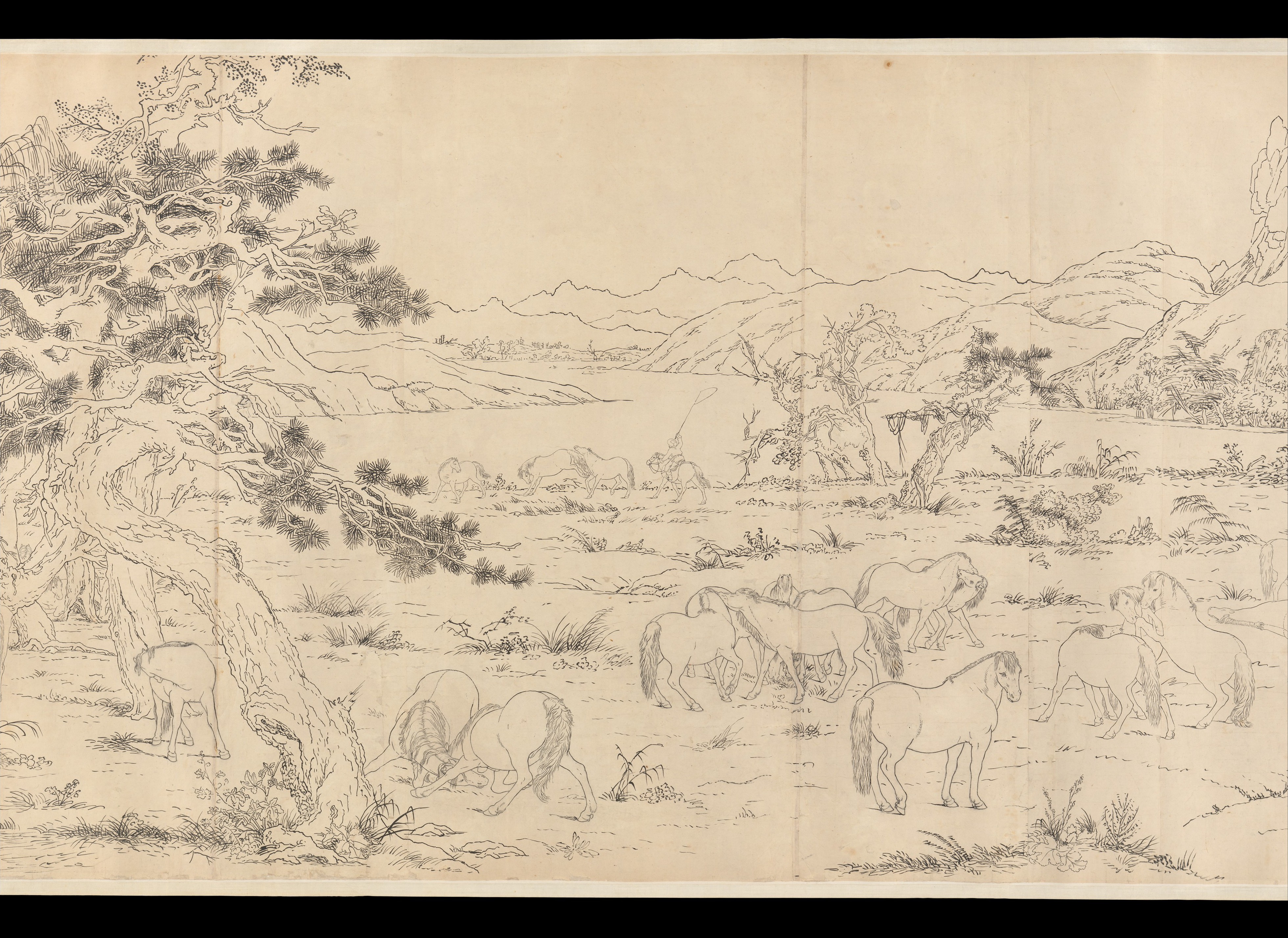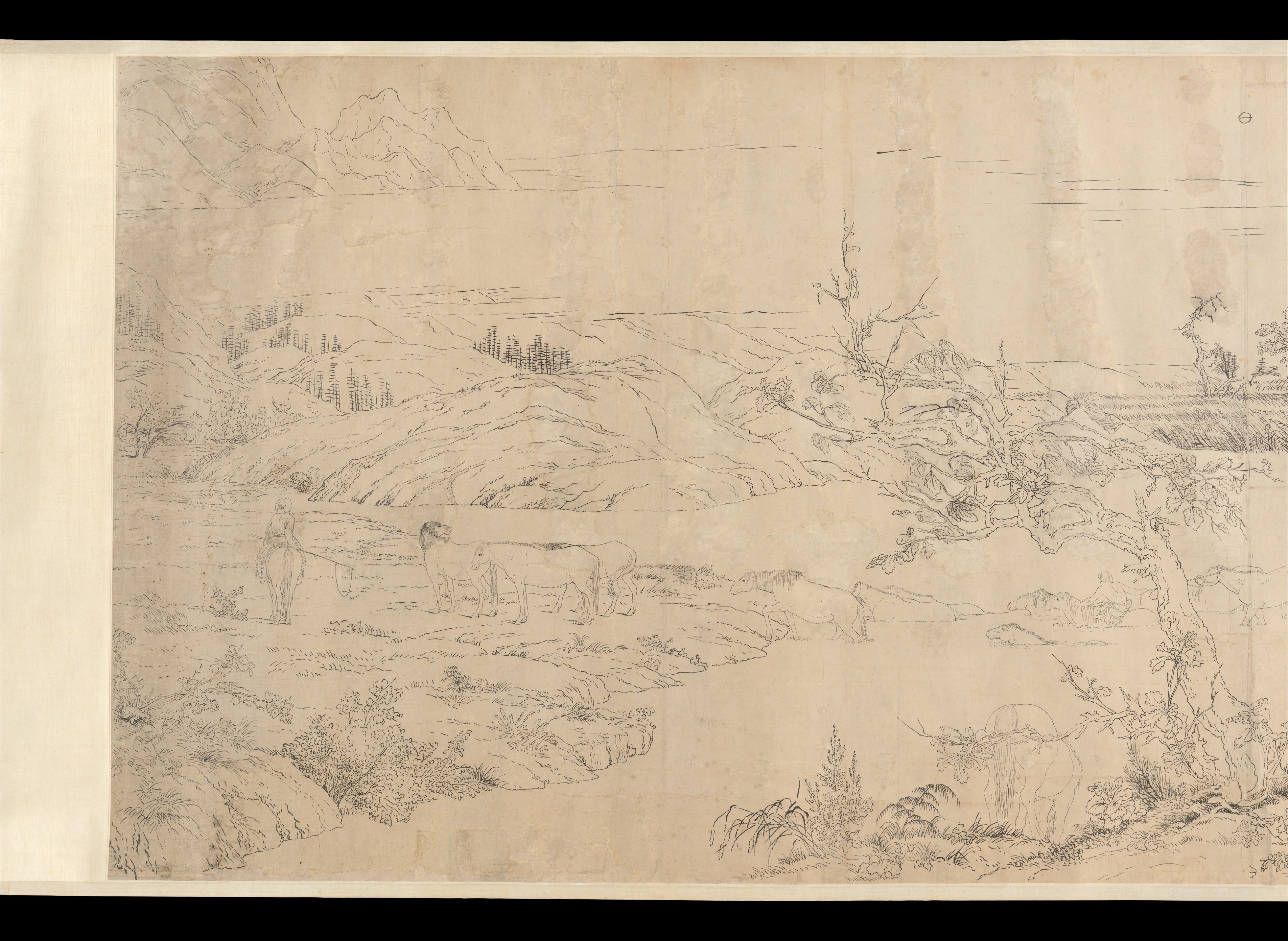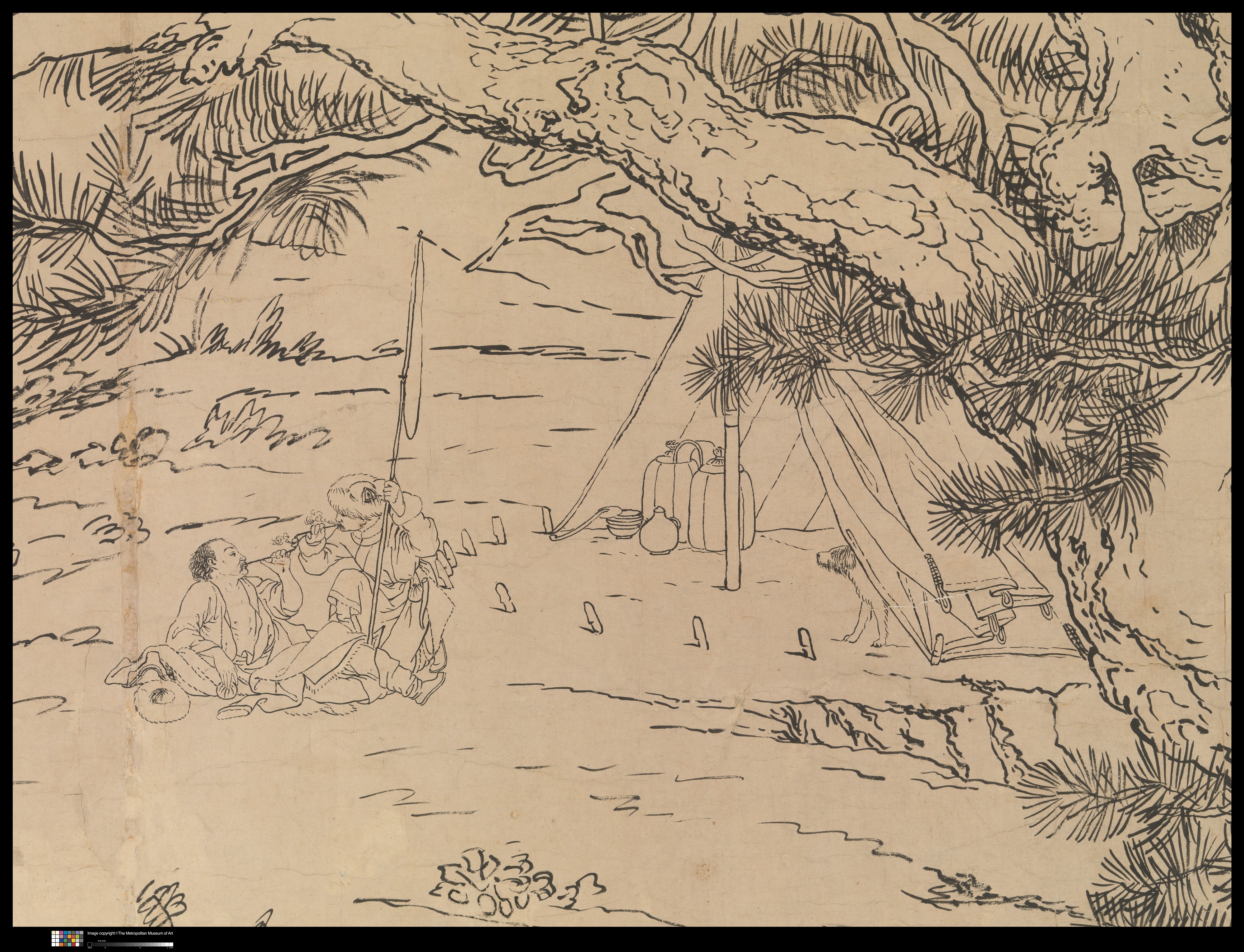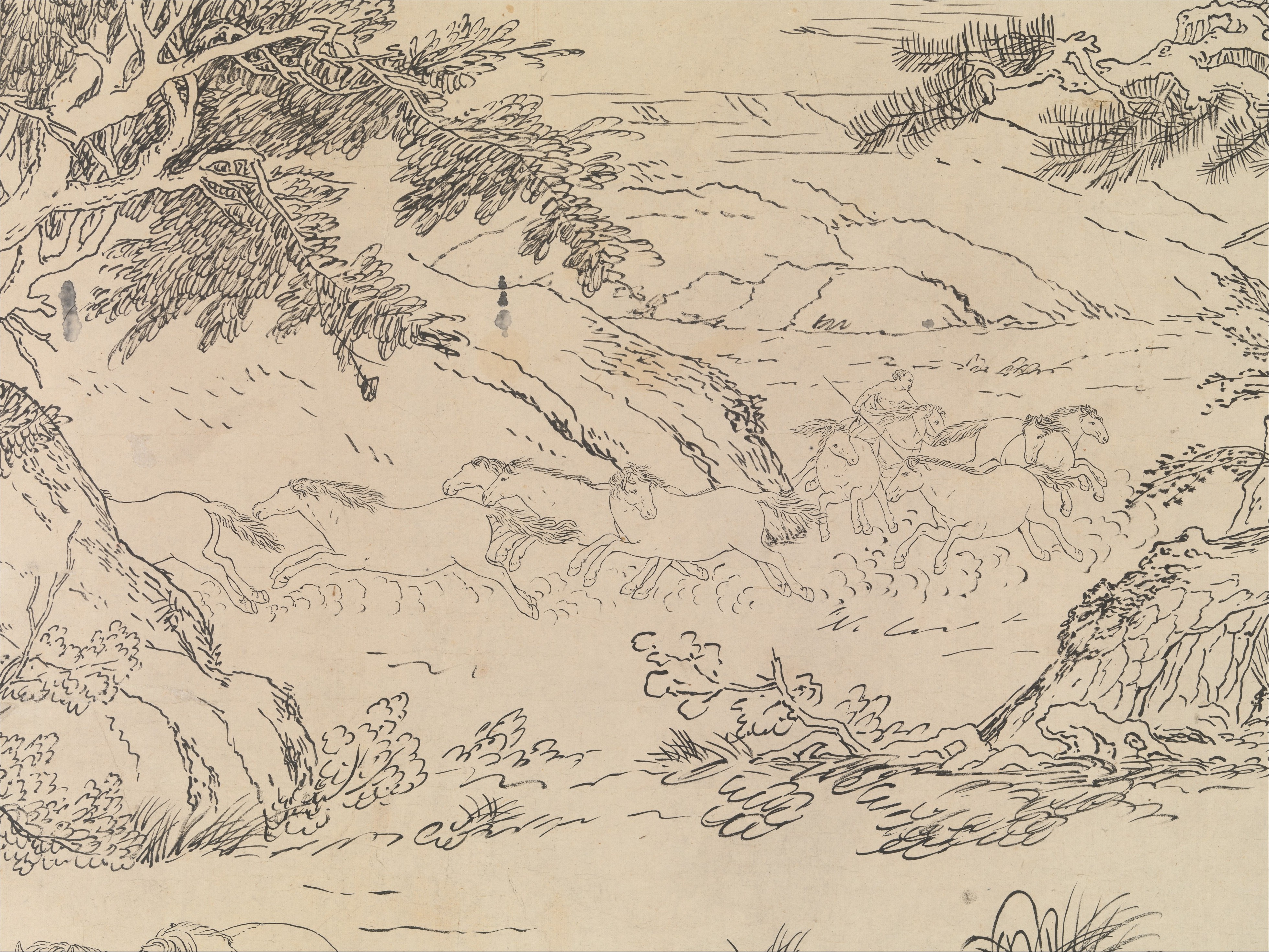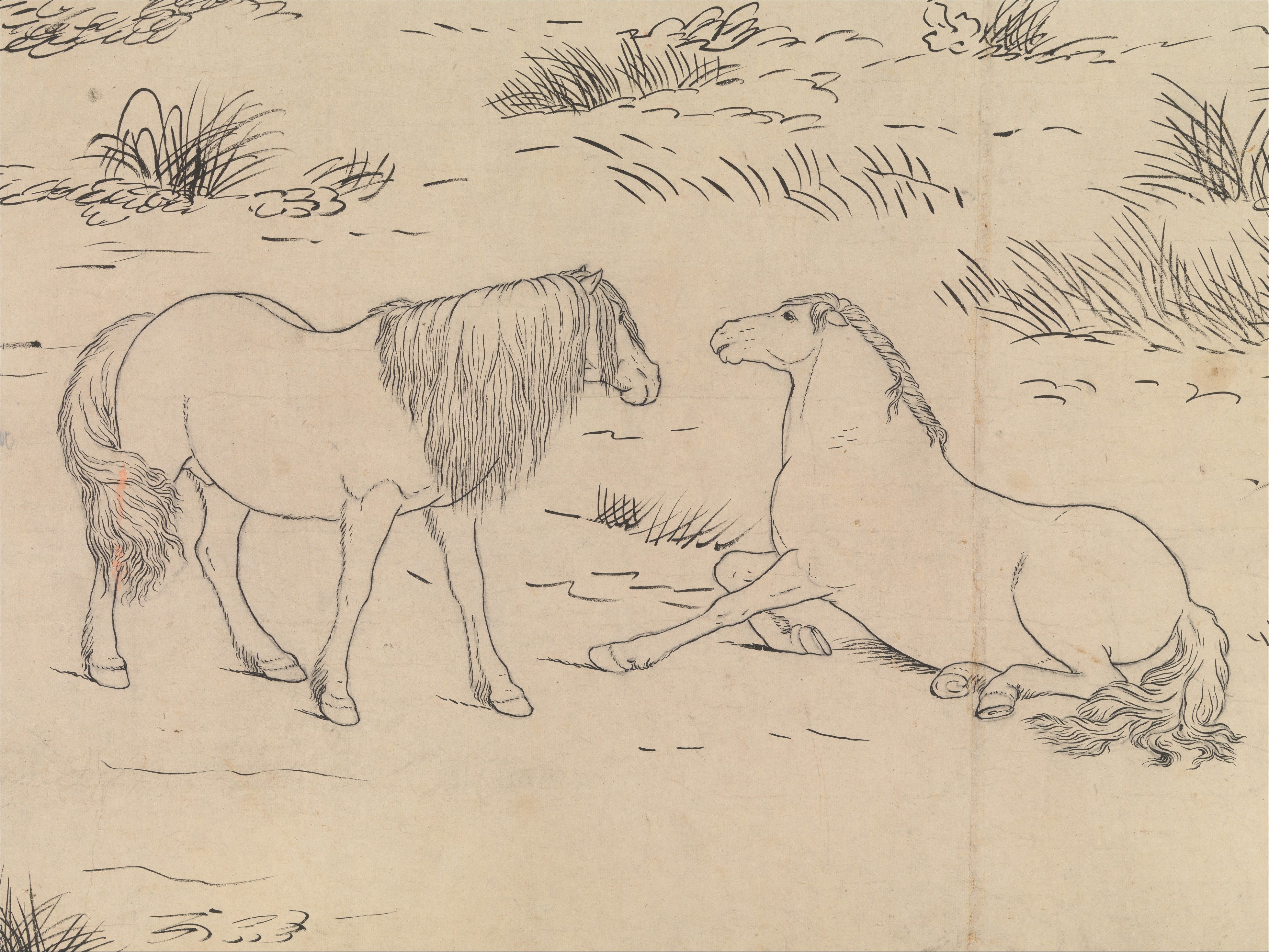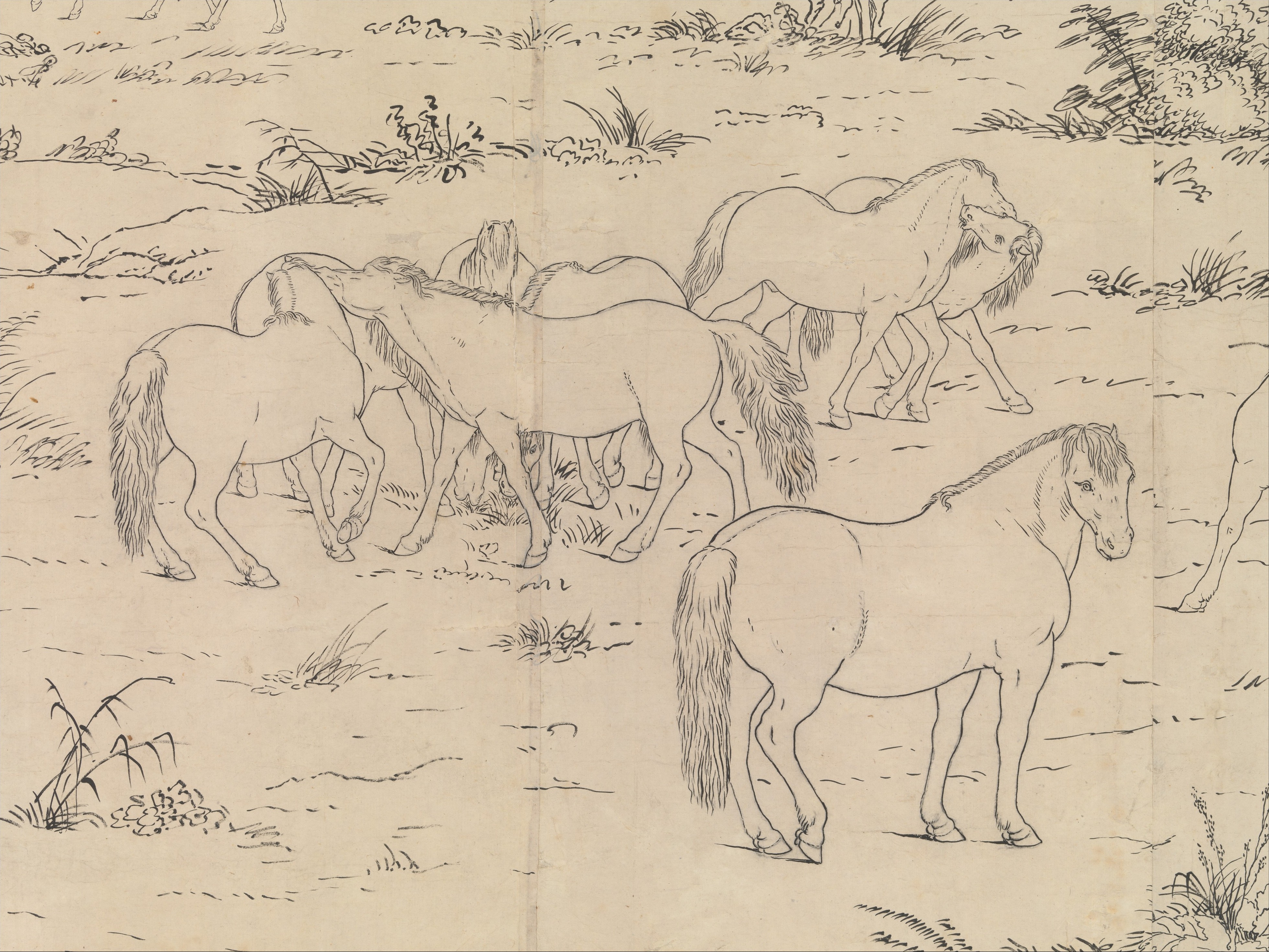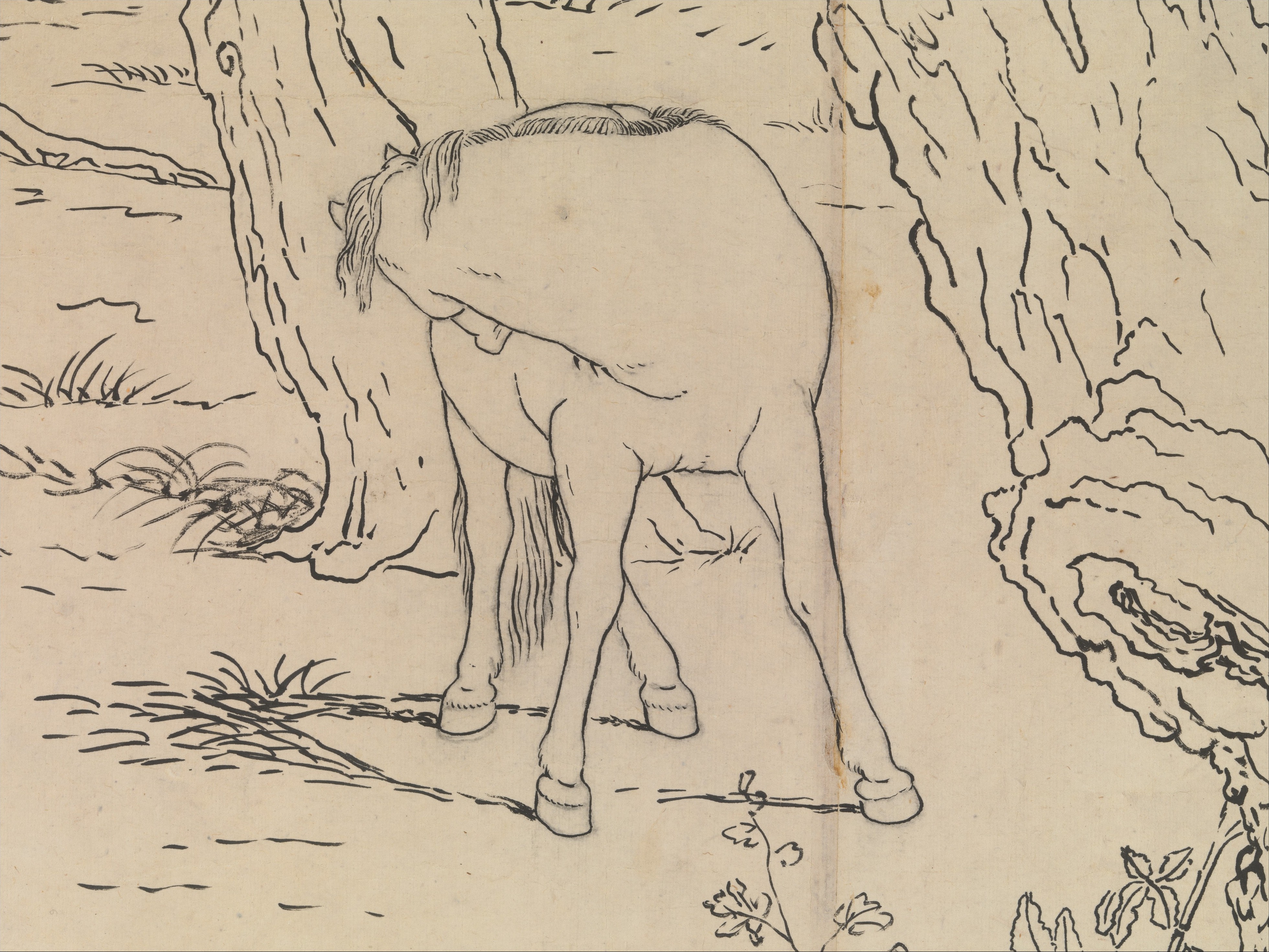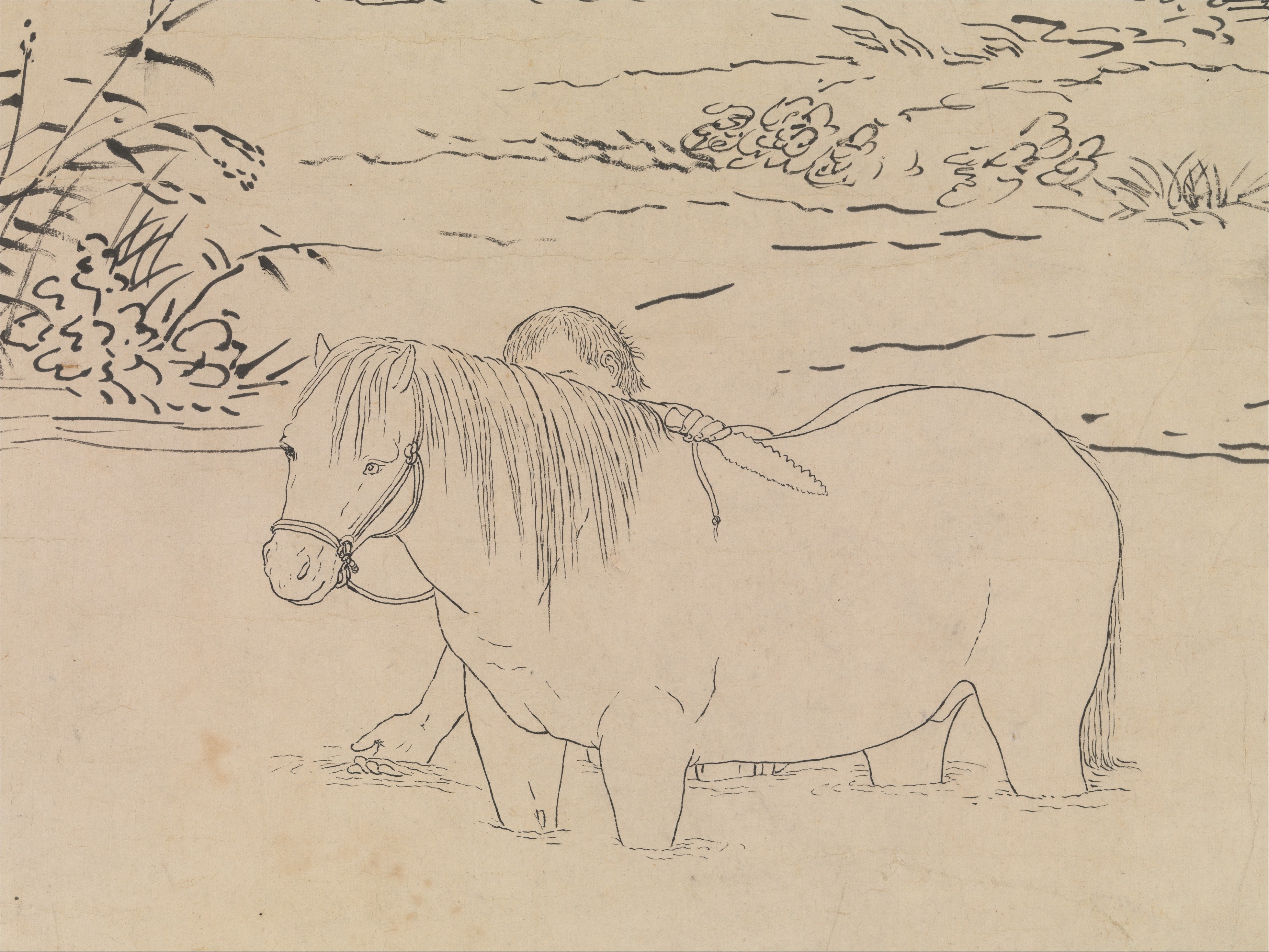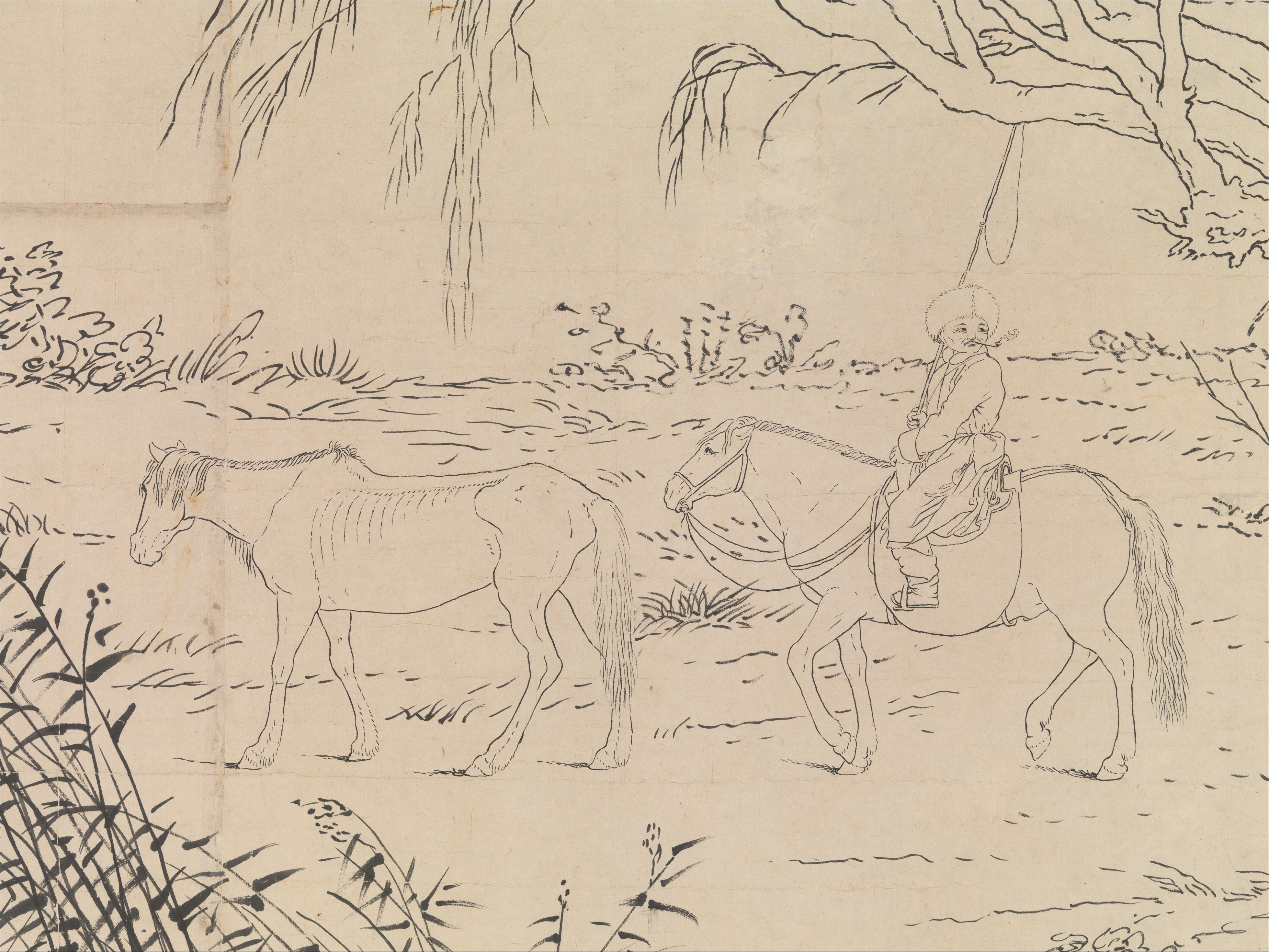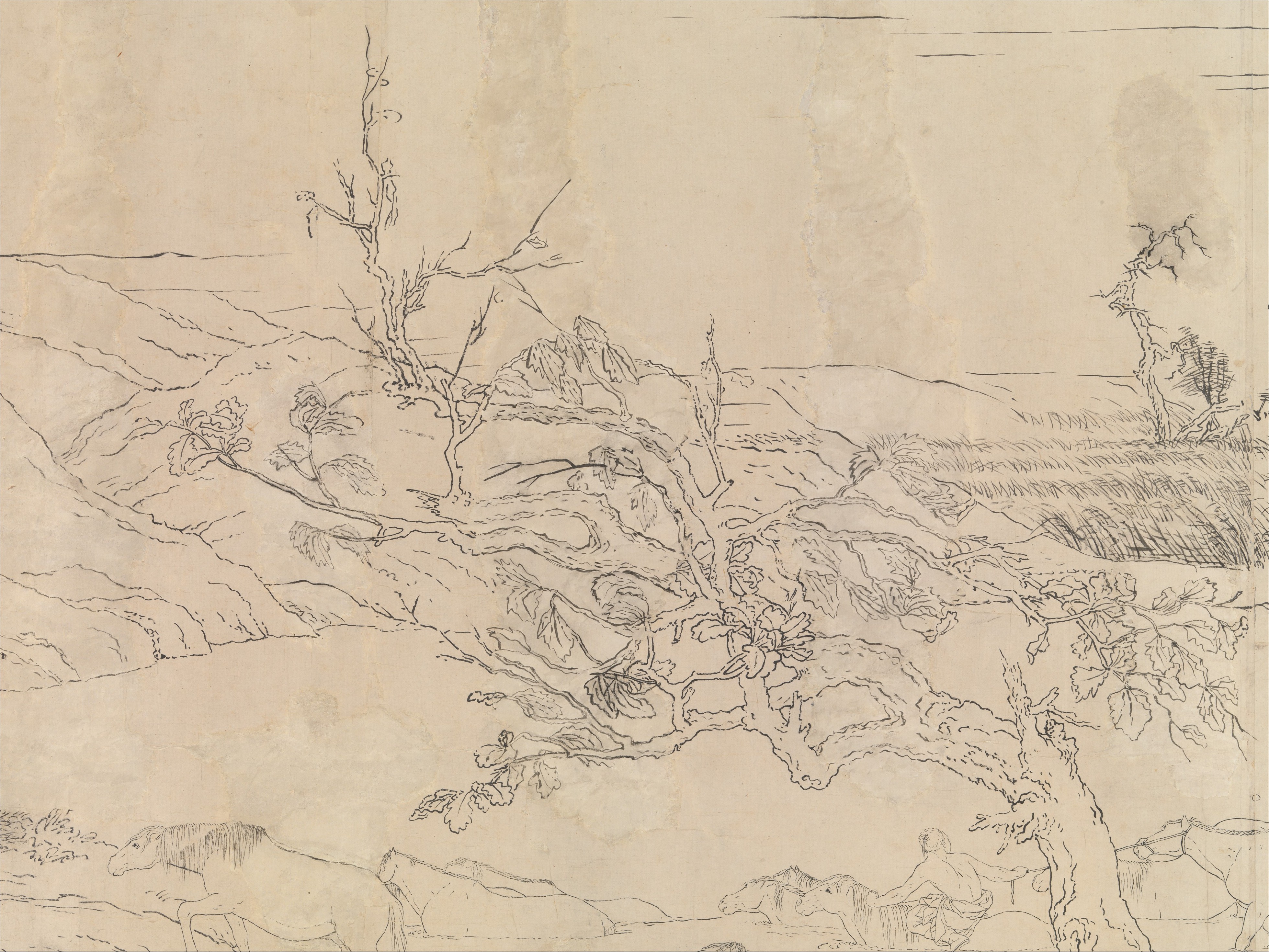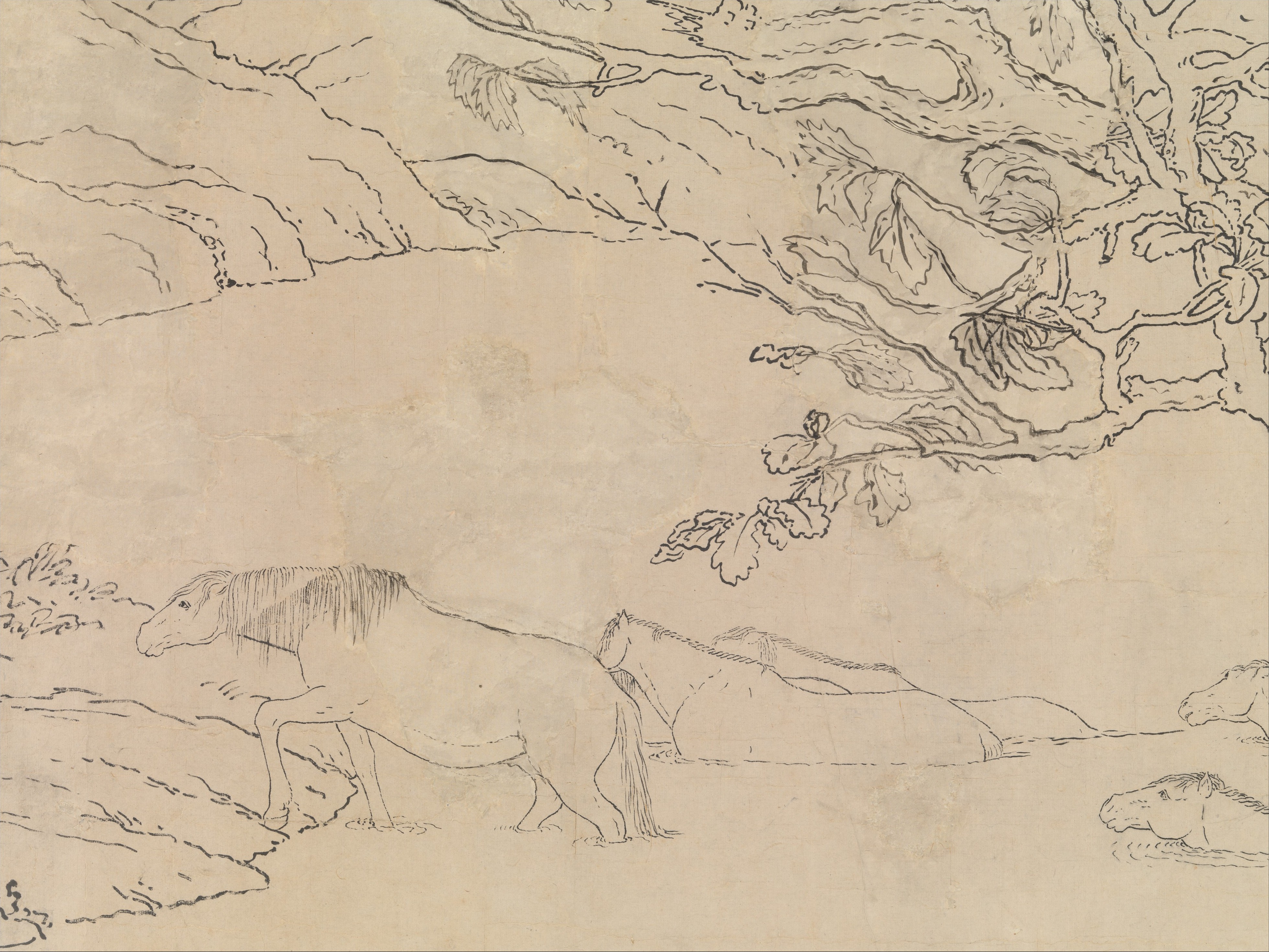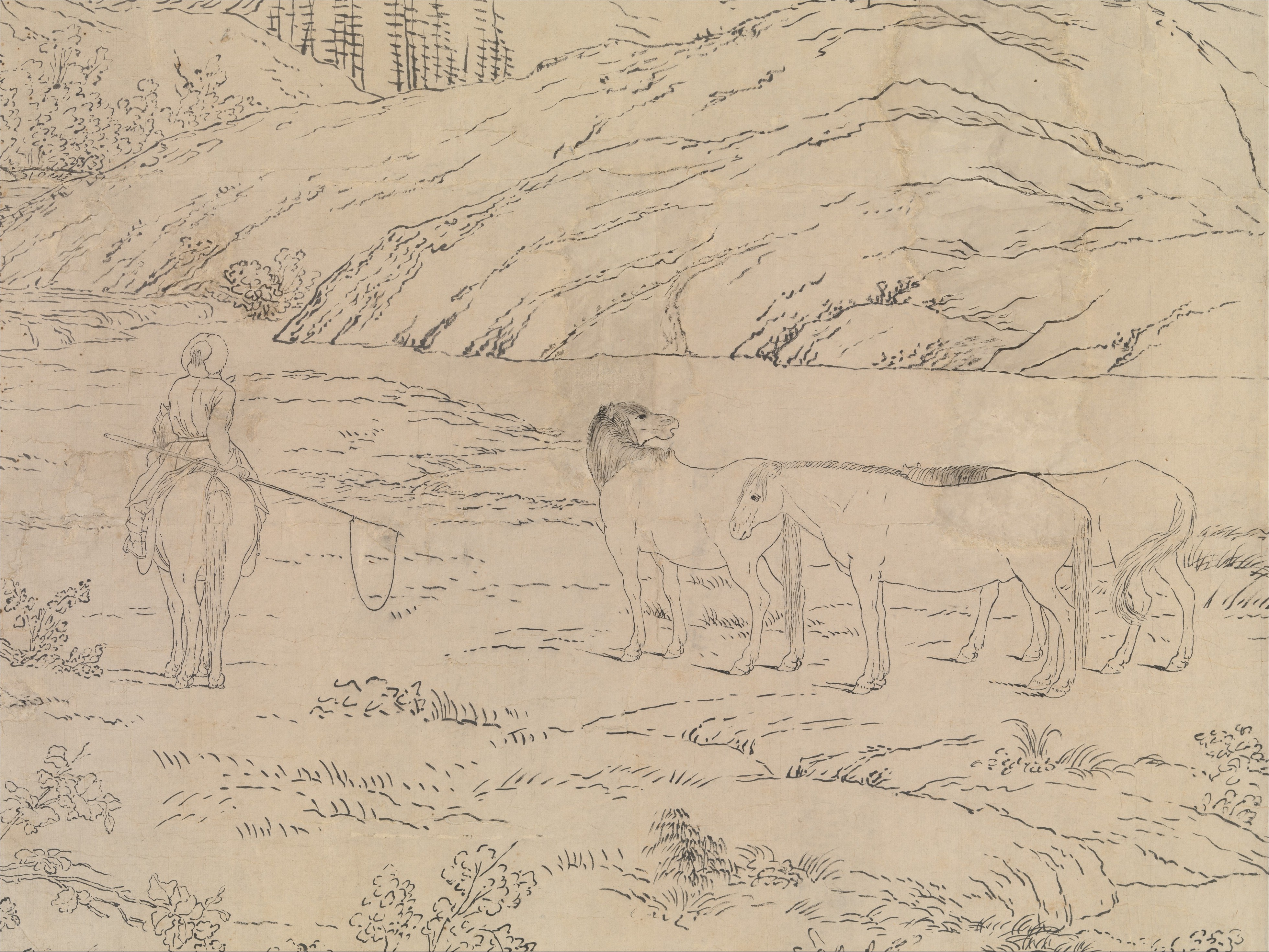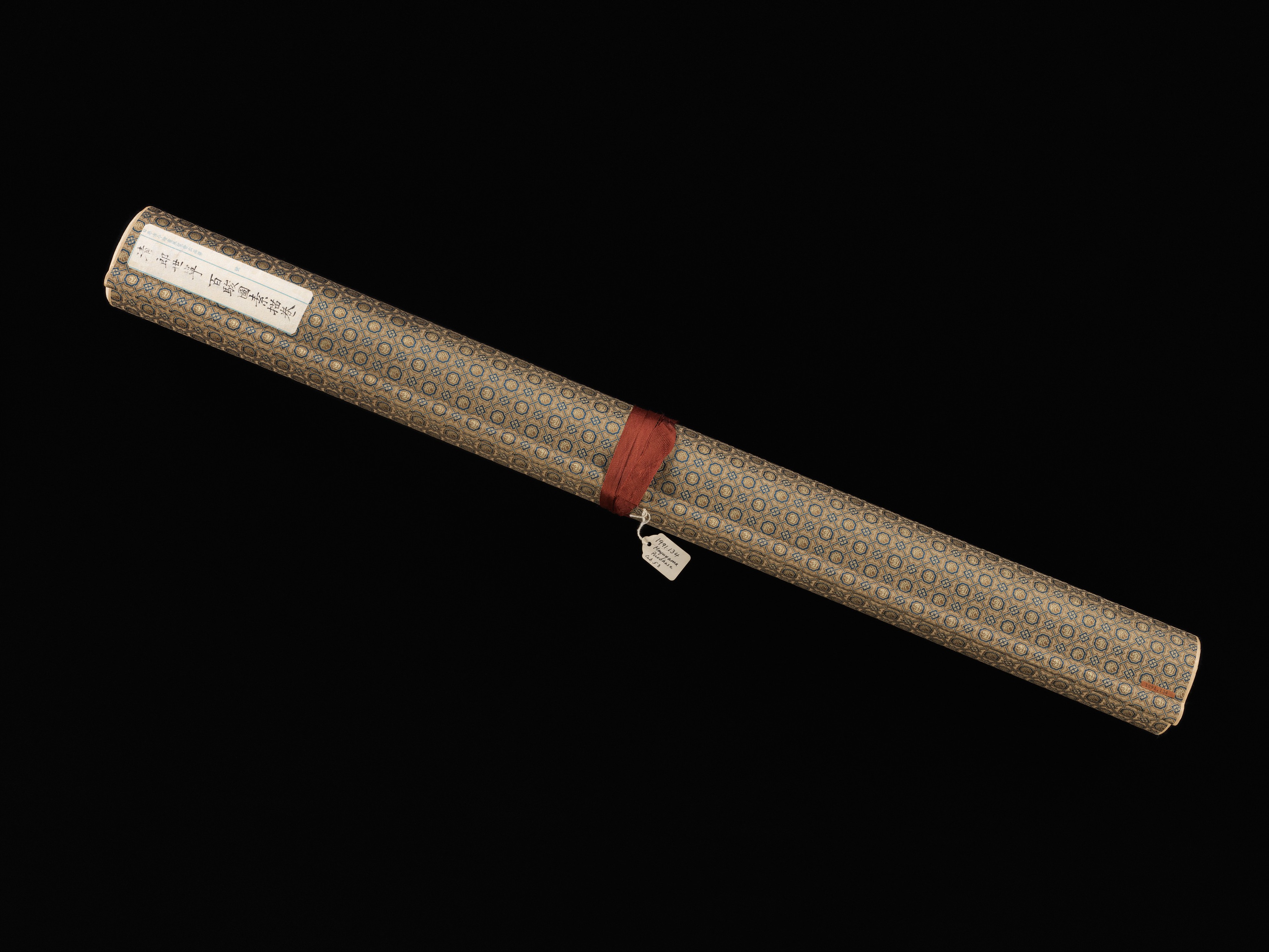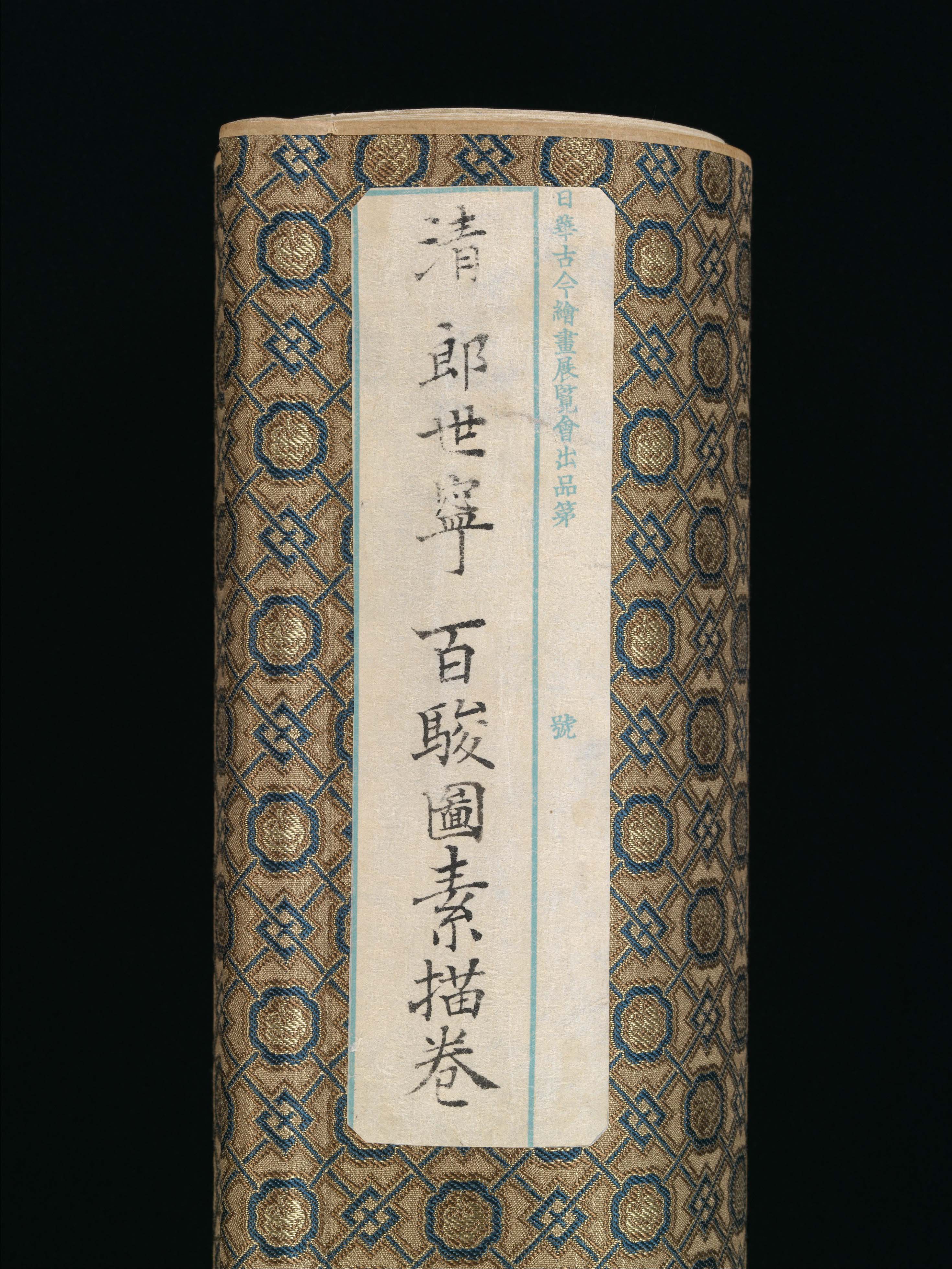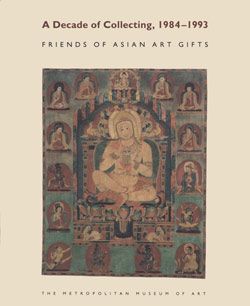One Hundred Horses
Giuseppe Castiglione Italian
Not on view
During the eighteenth century, the Manchu Qing dynasty sponsored a major revival of courtly arts, which attained a new monumental scale, technical finish, and descriptive intricacy. A key figure in establishing this new court aesthetic was the Italian Jesuit Giuseppe Castiglione. A master of vividly naturalistic draftsmanship and large-scale compositions, in Europe he worked as a muralist. Castiglione helped to create a new, hybrid style that combined Western realism with traditional Chinese conventions of composition and brushwork.
This monumental scroll, a unique example of a Castiglione preparatory drawing, is the model for one of Castiglione's most famous paintings, the One Hundred Horses scroll preserved in the National Palace Museum, Taipei. The drawing, although done with a brush rather than a pen, is executed almost exclusively in the European manner. Landscape is represented using Western-style perspective, figures are often shown in dramatically foreshortened views, and vegetation is depicted with spontaneous arabesques and cross-hatching. The large scale of the painting also suggests a European influence, as if Castiglione had taken a typical Western canvas and extended its length to make an architectural frieze.
#7650. One Hundred Horses
Due to rights restrictions, this image cannot be enlarged, viewed at full screen, or downloaded.
This artwork is meant to be viewed from right to left. Scroll left to view more.
